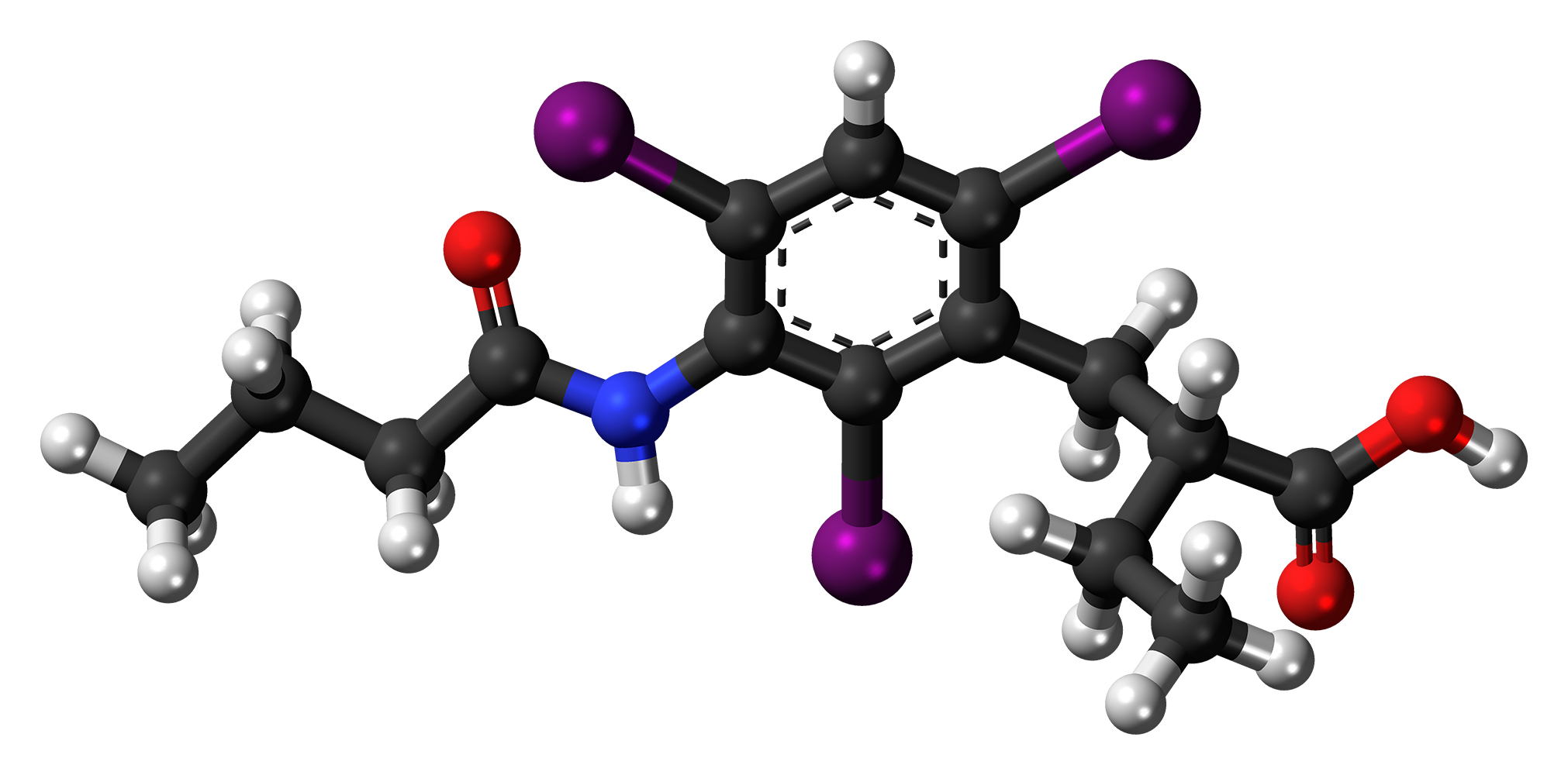Tyropanoic acid
Template:Chembox E number

| |

| |
| Names | |
|---|---|
| IUPAC name
2-[(3-butanamido-2,4,6-triiodophenyl)methyl]butanoic acid
| |
| Other names
2-[[2,4,6-triiodo-3-(1-oxobutylamino)phenyl]methyl]butanoic acid
| |
| Identifiers | |
3D model (JSmol)
|
|
| ChEMBL | |
| ECHA InfoCard | Lua error in Module:Wikidata at line 879: attempt to index field 'wikibase' (a nil value). Lua error in Module:Wikidata at line 879: attempt to index field 'wikibase' (a nil value). |
PubChem CID
|
|
| |
| Properties | |
| C15H18I3NO3 | |
| Molar mass | 641.02 g/mol |
Except where otherwise noted, data are given for materials in their standard state (at 25 °C [77 °F], 100 kPa). | |
| Infobox references | |
Tyropanoic acid and its salt sodium tyropanoate are radiocontrast agents used in cholecystography (X-ray diagnosis of gallstones). Trade names include Bilopaque, Lumopaque, Tyropaque, and Bilopac.[1] The molecule contains three heavy iodine atoms which obstruct X-rays in the same way as the calcium in bones to produce a visible image. After injection it is rapidly excreted into the bile.[2]
References
- ↑ "PubChem CID 5611".
- ↑ "Inhibition of hepatic binding of thyroxine by cholecystographic agents". J. Clin. Invest. 65 (5): 1032–40. May 1980. doi:10.1172/JCI109755. PMC 371433. PMID 7364937.
Categories:
- Pages with script errors
- Articles without InChI source
- Chemical pages without ChemSpiderID
- Articles without KEGG source
- Articles without UNII source
- Chemical articles with unknown parameter in Chembox
- Articles with changed EBI identifier
- ECHA InfoCard ID from Wikidata
- Articles containing unverified chemical infoboxes
- Chembox image size set
- Organoiodides
- Carboxylic acids
- Butyramides
- Anilides